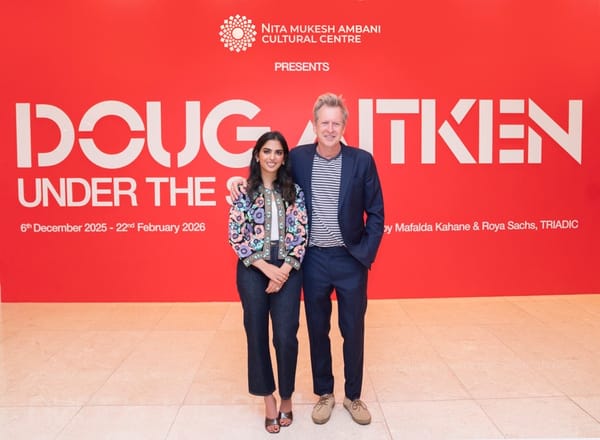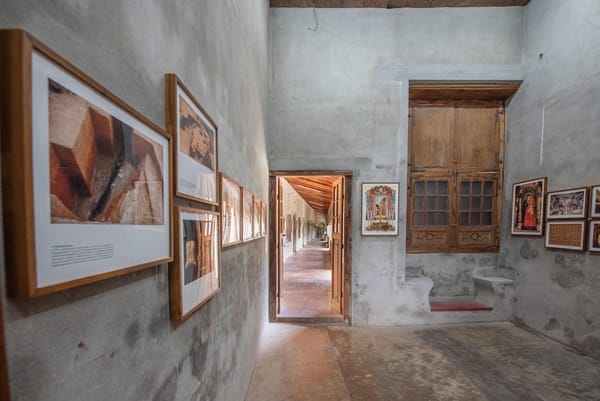The Evolution of Abstract Art: From Kandinsky to Contemporary Artists
Explore the rich history and dynamic evolution of abstract art, from the pioneering works of Kandinsky to the innovative expressions of contemporary artists. Understand how abstract art has transformed and continues to influence the art world today.

Abstract art, with its emphasis on shapes, colors, and forms rather than realistic depictions, has undergone a significant evolution since its inception in the early 20th century. This article delves into the journey of abstract art, starting with the groundbreaking work of Wassily Kandinsky and tracing its development through to the diverse and innovative practices of contemporary artists.
The Beginnings of Abstract Art
Wassily Kandinsky: The Pioneer
Wassily Kandinsky, often regarded as the father of abstract art, began to experiment with abstraction in the early 1900s. Kandinsky's work marked a departure from the representational art that dominated the Western art tradition.
- Influences and Philosophy: Kandinsky was heavily influenced by music, particularly the works of Richard Wagner and Arnold Schoenberg. He believed that art should evoke emotions in the same way that music does, without necessarily depicting recognizable objects.
- Key Works: His seminal works, such as "Composition VII" (1913) and "Yellow-Red-Blue" (1925), showcase his use of color and form to express spiritual and emotional experiences.
The Blue Rider Group
In 1911, Kandinsky, along with Franz Marc, founded Der Blaue Reiter (The Blue Rider), a group of artists united by their interest in abstract forms and the spiritual aspects of art.
- Objectives: The group sought to transcend the mere representation of the visible world, aiming instead to convey deeper emotional and spiritual truths through abstract forms.
- Legacy: The Blue Rider Group laid the groundwork for future abstract movements by promoting the idea that art could exist independently of the natural world.
The Rise of Geometric Abstraction
Piet Mondrian and De Stijl
Piet Mondrian, a Dutch painter, was a key figure in the development of geometric abstraction. His involvement with the De Stijl movement, founded by Theo van Doesburg, was instrumental in shaping his artistic philosophy.
- Neoplasticism: Mondrian's theory of Neoplasticism advocated for a new form of art that used only the most basic elements—straight lines, primary colors, and rectangular forms. His iconic works, such as "Composition with Red, Blue, and Yellow" (1930), embody this minimalist approach.
- Impact: Mondrian's emphasis on purity and order influenced not only the visual arts but also architecture, design, and typography.
Kazimir Malevich and Suprematism
Kazimir Malevich, a Russian avant-garde artist, introduced Suprematism, a movement that focused on basic geometric forms and the supremacy of pure artistic feeling.
- Black Square: Malevich's "Black Square" (1915) is a landmark in the history of abstract art. The painting, featuring a black square on a white background, challenged traditional notions of art and representation.
- Philosophy: Malevich believed that abstract art could transcend the material world and connect with universal truths.
The Surrealist Influence
Joan Miró and Biomorphic Forms
Joan Miró, a Spanish painter associated with Surrealism, introduced biomorphic forms into abstract art, blending organic shapes with vibrant colors.
- Dreamscapes: Miró's works, such as "The Tilled Field" (1923-1924) and "Harlequin's Carnival" (1924-1925), often depict dreamlike landscapes filled with whimsical, abstract shapes.
- Influence: His unique approach to abstraction influenced later movements, including Abstract Expressionism and Color Field painting.
Abstract Expressionism: A New Era
Jackson Pollock and Action Painting
Jackson Pollock, an American painter, revolutionized abstract art with his technique of drip painting, known as action painting.
- Techniques: Pollock's method involved dripping and splattering paint onto large canvases laid on the ground. This approach emphasized the physical act of painting, making the process as important as the finished work.
- Key Works: Works like "No. 5, 1948" and "Autumn Rhythm (Number 30)" (1950) exemplify Pollock's dynamic and chaotic style.
Mark Rothko and Color Field Painting
Mark Rothko, another leading figure of Abstract Expressionism, is best known for his color field paintings—large canvases with blocks of color intended to evoke emotional responses.
- Philosophy: Rothko aimed to create a transcendent experience for viewers, believing that color could convey profound human emotions.
- Notable Works: Paintings like "No. 61 (Rust and Blue)" (1953) and "Orange, Red, Yellow" (1961) are characterized by their luminous, floating rectangles of color.
Minimalism and Beyond
Minimalism
Emerging in the 1960s, Minimalism sought to strip art down to its most fundamental features, focusing on simplicity and form.
- Key Artists: Artists like Donald Judd, Agnes Martin, and Frank Stella created works that emphasized geometric shapes, repetition, and monochromatic palettes.
- Philosophy: Minimalists rejected the emotional intensity of Abstract Expressionism, instead promoting the idea that art should be purely visual and devoid of personal expression.
Contemporary Abstract Art
Diversity and Innovation
Contemporary abstract art is marked by its diversity and the incorporation of various media and technologies.
- Digital Art: Artists like Cory Arcangel and Manfred Mohr use digital technology to create abstract works that explore the relationship between art and technology.
- Mixed Media: Contemporary artists often combine traditional and non-traditional materials, such as paint, fabric, found objects, and digital elements, to create multidimensional abstract works.
Global Perspectives
Abstract art has become a global phenomenon, with artists from diverse cultural backgrounds contributing to its evolution.
- African Abstract Art: Artists like El Anatsui and Julie Mehretu draw on African traditions and contemporary issues to create abstract works that are both visually striking and deeply meaningful.
- Asian Abstract Art: Artists such as Yayoi Kusama and Zao Wou-Ki incorporate elements of Eastern philosophy and aesthetics into their abstract creations, blending traditional techniques with modern sensibilities.
The Future of Abstract Art
As abstract art continues to evolve, it remains a vital and dynamic force in the art world. The boundaries between different art forms are increasingly blurred, leading to new and innovative approaches to abstraction.
- Interdisciplinary Approaches: Artists are increasingly collaborating across disciplines, incorporating elements of performance, music, and technology into their abstract works.
- Sustainability and Social Issues: Many contemporary abstract artists are addressing pressing global issues, such as climate change and social justice, through their work, using abstraction as a means to provoke thought and inspire action.
Conclusion
The evolution of abstract art from Kandinsky to contemporary artists is a testament to its enduring appeal and limitless potential. By continuously pushing the boundaries of form, color, and technique, abstract artists have created a rich and diverse legacy that continues to inspire and challenge viewers. Whether through the spiritual compositions of Kandinsky, the geometric purity of Mondrian, the emotional intensity of Rothko, or the innovative practices of today's artists, abstract art remains a powerful and ever-evolving language of human expression.





